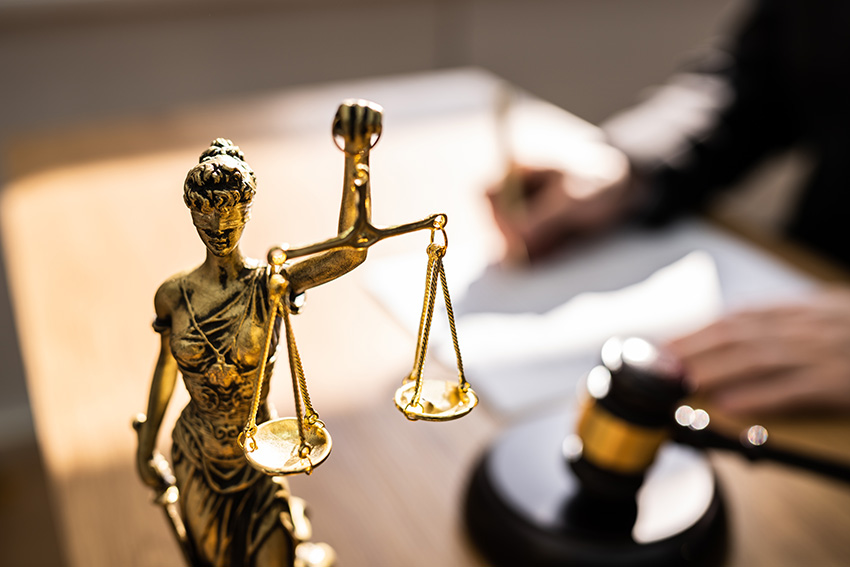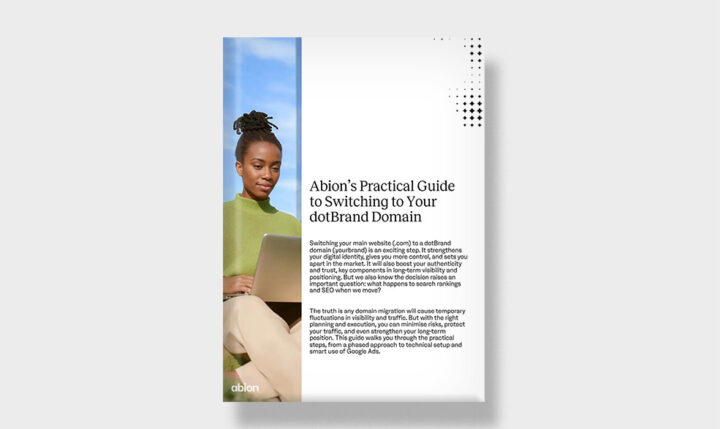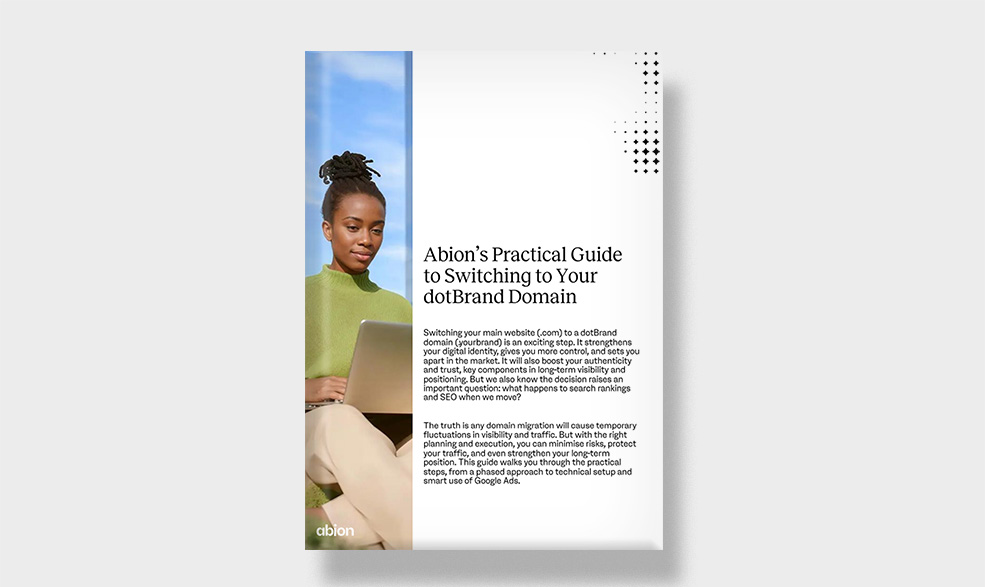
FRAUD AND INTRUSIONS
Trademark Infringement
In this article, we will explore the impact of trade mark infringements, and what you can do to protect your business and brand from this all too common occurrence.
How to protect yourself against trade mark infringement
Trademark infringement is another of the ills that businesses regularly must deal with. From duplicating logos to similar-sounding slogans, there is always a battle ongoing to shore up your business and protect your brand from imitators. In this Abion guide, we'll show you how trade mark infringement works, and more importantly, how to combat it with our tools.
Trademark infringement explained
At its core, trade mark infringement is the deliberate use of another company’s logo, slogan, brand name or another form of identity in breach of established intellectual property rights. Only registered trade mark owners can use such logos and names in marketing, for sales purposes and other operations. When another uses your logo or brand without permission, they could be found guilty of trade mark infringement.
Trademark infringement may involve less successful companies attempting to pass themselves off as your brand. It may also see entities using your logo to sell cheap imitations, as often happens with Disney toys. It could even be as simple as a restaurant having an irrelevant name because customers might associate it with your brand. For instance, the highly publicised spat between Louis Vuitton (the designer and luxury goods company) and Louis Vuiton Dak (a South Korean chicken restaurant). On occasion, perpetrators may have no interest in developing competing products at all. Instead, their motive may involve lining their pockets through more sinister means, specifically scams. They may intend on committing fraud and often go to extraordinary lengths to do so, including the use of dummy social media accounts, chat services, and websites - all, of course, using your logo, trade mark and brand.
Unless resolved quickly, trade mark infringement often leads to costly lawsuits and has the potential to damage brands. Heavily financial penalties, and in severe cases, custodial sentences are designed to act as suitable deterrents. When small businesses located offshore are involved in trade mark violations, it can be tough to get results. Fortunately, there are tools out there that can help your business fight back, and we’ll cover a few of these shortly.
Causing confusion: The main purpose of trade mark infringement
The primary purpose of trade mark infringement is to sow confusion in the mind of consumers. They may purchase an item under the assumption that it is the real deal, only to be fooled into buying a second-rate product. In other cases, mimicry isn’t the order of the day. Instead, trade mark infringement is more sinister, intended solely to damage the reputation of a rival brand or business.
Of course, with millions of companies operating digitally and across borders, it is inevitable that some will share similar features, especially when it comes to logos and even slogans. However, there is a clear line between coincidence and happenstance in logo likenesses (think the tick symbol in Rexona and Nike, for instance) and outright trade mark infringement.
The “tick symbol” in this example is the logo for Nike and Rexona (also known as Sure), but the design is different enough that both remain easily identifiable brands. There is no issue of trade mark infringement as both logos are distinct, are well-known and represent entirely different products. In short, there is little cause for confusion amongst consumers. Not all companies are as harmonious with one another, though.
An example of alleged copyright infringement in recent times that is far closer to home concerns Arla and Glada Bonden. Arla moved production of Boxholm cheese to Östersund in 2018 but kept the name of the town where it was initially produced. Since Arla’s departure, Glada Bonden has manufactured its cheese in Boxholm, naming it after the town where it is made. This was always going to cause strife.
Arla believes that Glada Bonden’s cream cheese is a classic example of trade mark infringement, claiming that the name, colour, shape and logo are confusing and that the products are too similar. They invoked Swedish trade mark infringement laws stating that place names can indeed form a part of a trade mark - historical examples include biscuits and liver paté. Naturally, Glada Bonden feels differently, believing that they can develop their cheese and name it accordingly after Boxholm.
Another case that did go all the way to the courts involved Crocs, Inc and Skechers. The 2011 battle saw Crocs allege that Skechers had stolen their patented design with their Nanolite foam shoes. That case resulted in a private settlement, with Skechers agreeing to stop the production of moulded footwear in favour of focusing on its core products.
Aside from alleged trade mark infringement, both cases are also fine studies of other types of potential violations. These include:
- Design Infringement
When one brand alleges the other has copied the design of one of its products, such as Crocs’ claim against Skechers. - Scams and Frauds
When an organisation or individual attempts to profit by illegally posing as your brand, or falsely mirroring your business, either through social media, a website, or other mediums. - Copyright Infringement
When a company deliberately uses easily recognisable, copyrighted property belonging to another. This is the argument (in terms of logo and naming) put forth by Arla concerning Glada Bonden’s Boxholm cheese.
What trade mark infringement means for your business
As discussed, trade mark infringement penalties can include lawsuits, fines, and prison sentences. These are the results of litigation, though. Before you get there, there are lots of bumps in the road. These include:
- Reduced exposure for your brand, as rival brands attract your clientele
- Bad publicity if the guilty party is engaged in inappropriate or illegal activities
- A lack of marketing prowess if your company isn’t easily identifiable from the others
- Financial losses if your sales dip because of an imitator brand
It is for these reasons and more besides that you must react to counter brand infringement. Fortunately, we’re here to help.
How to protect your business from brand infringement
The most effective way of protecting your assets, intellectual property and brand is to secure them via a patent. Registering your trade marks won’t stop others from attempting to steal or hijack them. However, trying to imitate a brand with a registered trade mark is a lot riskier for rivals than they might otherwise like and is fraught with danger if they get caught. Therefore, the likelihood of it happening to your brand is reduced with proper protection.
To stand the best chance of combatting trade mark violations, you need help, and that’s where we come in.
We offer step-by-step assistance against trade mark infringement
At Abion, we have the tools to help you learn how to avoid trade mark infringement. Moreover, we can help you combat this with both legal and technical options available. We can assist you in registering and monitoring your brand, securing your IP, and will stand by your side if you fall victim to trade mark infringement.
Our team of experts are raring to go and provide this step-by-step service for our clients.
Trademark registration
We can help you register your trade mark with the patent and registration office in Sweden (PRV), but also offshore (through WIPO) via a simple to use e-service. We can also help you lay the groundwork to ensure that your trade mark isn’t similar to existing brands. We utilise many channels, including the Trade mark Clearing House Database (TMCH), to ensure that your business is unique, identifiable, and protected. Once registered, your trade mark will last ten years before it needs to be renewed.
Monitoring your brand
Monitoring your rights is key. Registration alone permits you to act on trade mark infringements, but it won’t help you hunt for breaches. Companies may fall into this trap if they believe that trade mark registration alone is a suitable enough measure to take. This is a mistake. Monitoring is the catalyst that allows you to identify breaches. We can’t stress enough the importance of keeping tabs on your trade mark.
Trademark and domain monitoring are two additional services that Abion provides. Our monitoring tools keep tabs on legal trade marks and check if anyone is trying to register an identical and confusing brand. Our domain monitoring options detect fraudsters and help in the fight against attempted fraud. We also provide app monitoring, marketplace and social media surveillance tools to further bolster your arsenal in the battle against trade mark infringement.
Cease and desist
Of all the elements of trade mark infringement out there, finding instances of it quickly enough is one of the trickiest, especially when small businesses are engaging in it. We’ve got the tools that help prevent and detect infringements early enough where there is still time to do something about it. Before the situation escalates, our legal experts will help draft cease and desist letters. These written warnings are the first step in getting culprits to stop their brand infringement activities.
Domain name disputes
We offer a similar service for domain name disputes. Naturally, most businesses have websites, and there are only so many URLs. It is not uncommon to find identical domain names but with altered suffixes (.net, .org, for instance). This can lead to domain name disputes, and once more, any suspected infringement will be identified and tackled early by our team.
Preliminary investigations and takedowns
At Abion, we aren’t afraid to stand up to those guilty of intellectual property infringement, square up to them and initiate takedowns with technical service providers if necessary. If the desired outcome has not been met after our cease-and-desist letters are sent, and preliminary investigations run, we could turn the issue into a trade mark lawsuit.
Our consultancy services are experienced at handling intellectual property agreements, shutting down domains guilty of typosquatting and cybersquatting, and are well-versed in tackling those who aim to mimic your brand. Don’t hesitate to contact Abion to learn more about what we can offer your business through these services.
Learn more about trade mark infringement
Absolutely not. It can be punished with hefty fines, domain takedowns and potentially, prison sentences in the most severe cases.
Officially, a legal decision made by a court of law would be required to see a trademark taken away by any entity other than its owner.
If you want to protect yourself from imitators and rivals, then we strongly suggest you do so. Registering your logo and trademark provides added security.
Not for the first ten years. Trademarks often have decade-long lifespans, after which they can be renewed in ten-year periods, indefinitely.
Want to know how we can help protect against trademark infringement?
Contact us for further information!
INSIGHT & SUPPORT
Popular blogs





